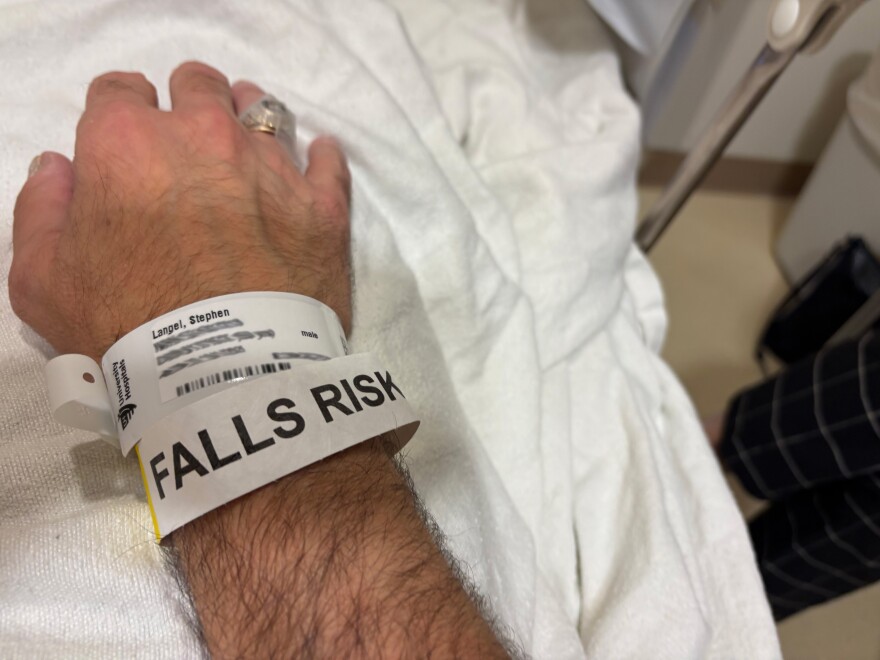Kidney stones cause pain, discomfort and infections. They're also becoming increasingly common nationally, affecting one in 10 Americans — including me.
It all started at 5:30 one morning last month as I was lying in bed. I suddenly felt a stabbing pain down my left side, but had no idea of the cause. I tried everything from Aspirin to heating pads to a hot shower, but the pain kept getting worse until I could hardly stand up.
I ended up in the emergency room. As my urologist, University Hospital's Dr. Aram Loeb, explained recently when we were on ���ҵ���’s “Sound of Ideas” together, kidney stones were the cause.
They develop when materials found in food, such as calcium oxalate, crystallize and form stones.
But it's not the stones themselves that cause the pain, Loeb said. Instead, the pain comes when the stones "pass or leave the kidney and go down the tube that goes down to the bladder," he said. "When it blocks things up, that's when you start to feel that pain.”
It turns out my kidney stone was too big at seven millimeters to pass on its own. So Loeb decided to remove the stone surgically by putting in a stent — a thin, flexible funnel that caused me a lot of discomfort. However, stents also prevent kidney blockages and help treat infections, Loeb said.
A week and a half later, he removed my kidney stone using a procedure known as laser lithotripsy, where a laser is used to break up the stone. Within a day or two, I thankfully felt like myself again.
Avoiding a repeat
Since I never want a recurrence of the disease, I called up Dr. Loeb for advice.
The main culprit for kidney stones?

“Dietary issues," Loeb said. "That’s the biggest thing. These are things that we’re doing to ourselves.”
And it’s not just me. Kidney stones because of Americans’ taste for salty, sugary and processed foods. More specifically, Loeb said it's important to avoid food with a lot of sugar or salt.
Hydrate, hydrate
Aside from avoiding those foods, Loeb recommended drinking about three quarters of a gallon of water per day to avoid dehydration, another big factor in kidney stones.
"The biggest thing is drinking lots of water," he said. "Really water is a great equalizer."
Dehydration can lead to larger kidney stones like the one I had, which are more difficult to pass without surgery, Loeb said.
“When there's not enough volume to flush things through, that's when things start to grow," he said. "It wasn't like it was born at seven millimeters. You nurtured it.”
Nurtured it? That was hard to hear. I had no idea about the damage I was doing by taking in too little water and drinking mostly soda and coffee.
But — nearly a gallon a day?! I’m not used to drinking that much water!
So, I called my mother, who had kidney stones herself, to ask if she thought drinking all that water is really worth it.
I guess I should not have been surprised by the answer.
“Okay, what I think is, how did you like having the kidney stones? Not much fun," she said. "They’re brutal. Yes, I’d say it’s worth drinking the water. Well, well worth it.”

Well, you know what they say, listen to your doctor… and your mother.
Labels and no labels
That’s what I’m keeping in mind as I shop for groceries, eyeing labels more carefully as I decide what to buy. For instance, I avoid items with too much salt or sugar.
Recently I was looking at a can of soup when I was shopping and discovered it had 1420 milligrams of salt, which is 62% of the recommended salt intake for an entire day. That's a lot of salt for one meal and salt is such a central factor in developing kidney stones. So I put it back.
In fact, Loeb recommends buying food that doesn’t have labels at all, like fresh fruit and vegetables.
But for people who do end up in trouble, he said University Hospitals will open a kidney stone clinic in early November, at Ahuja Medical Center in Beachwood.
As for me, I hope I never have to set foot inside the place.



